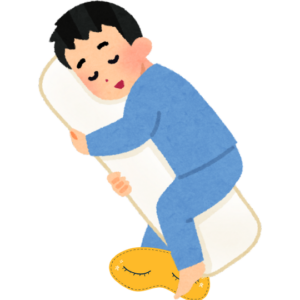Heat Pack Benefits for Kids with Sensory Needs at Bedtime

A good night’s sleep can be difficult for children with sensory processing disorders (SPD) or autism, but creating a soothing, sensory-friendly bedtime routine can help them unwind and prepare for rest. One of the simplest yet most effective tools to include in this routine is a heat pack. The comforting warmth and gentle pressure of a heat pack can work wonders in calming overstimulated nerves and muscles, offering much-needed relaxation before bedtime. In this article, we’ll explore how heat packs can support better sleep for children with autism or SPD, while also providing practical steps to create a calming bedtime routine.

How Heat Packs Can Help with Sleep Issues in Children with Autism
Children with autism often face difficulties falling asleep or staying asleep due to sensory sensitivities. The slightest noise, light, or discomfort can prevent them from settling into a restful state. This is where a weighted wheat pack comes in handy. The gentle warmth of a heat pack can stimulate the body’s natural relaxation response, helping to reduce anxiety and ease tense muscles. The weight of the heat pack also offers deep pressure stimulation, which is known to have a calming effect on the nervous system, similar to a weighted blanket.
Using a heat pack as part of a child’s sensory routine before bed can help their body transition more smoothly into relaxation. The warmth creates a sense of security, while the weight helps ground them, reducing feelings of restlessness. Over time, this can lead to better sleep quality and fewer nighttime awakenings.
Step-by-Step Guide to Creating a Relaxing Bedtime Routine
Creating a predictable bedtime routine is essential for children with sensory processing disorders. Routines provide structure and security, helping children know what to expect and how to prepare for bed. Here’s a step-by-step guide to incorporating heat packs into your child’s bedtime routine:
| Step | Action | Purpose |
| Start with a Calm Environment | Dim the lights and reduce background noise to create a soothing atmosphere. | Helps minimise sensory distractions and signals the brain that it’s time to wind down. |
| Warm the Heat Pack | Heat the pack in the microwave according to instructions. Ensure it’s comfortably warm, not too hot, by checking the temperature before use. | Provides warmth, which relaxes the body and helps release tension, making the child more comfortable. |
| Gentle Pressure | Place the warm heat pack on your child’s chest, feet, back, or lap. You can also lay it on their shoulders or arms to mimic a hugging sensation. | The combination of heat and gentle pressure promotes deep pressure stimulation, which can help calm the nervous system. |
| Incorporate Sensory Activities | Engage your child in quiet activities like reading, listening to soft music, or practising deep breathing while using the heat pack. | Reinforces relaxation by combining sensory-friendly activities with the soothing effect of the heat pack. |
| Ease Into Bedtime | After 15-20 minutes, guide your child to bed. They may take the heat pack with them, ensuring it’s safely used in bed. | Helps transition from the heat pack’s comfort into sleep, reducing night-time anxiety and encouraging a sense of security. |
By including a heat pack in your bedtime routine, you not only soothe your child physically but also help them feel emotionally secure, making sleep more achievable.
Discover the Mind Switch, a soothing weighted heat pack designed for sensory processing disorders. Perfect for emotional regulation and relaxation. Shop now! Mind Switch

Heat Pack Benefits for Restless Sleepers
Restless sleepers, especially those with sensory sensitivities, often find it hard to settle down at night. They may toss and turn or wake up multiple times due to discomfort or overstimulation. Heat therapy is a simple and effective way to address this. The warmth of a heat pack helps relax tight muscles, which can be especially helpful for children who experience tension or discomfort as part of their sensory challenges.
The weight of the heat pack adds an extra layer of relaxation. This deep pressure has been shown to mimic the calming effects of being held or hugged, which can be particularly soothing for children with autism. If your child is prone to waking up in the middle of the night, keeping a heat pack nearby can provide quick relief and help them get back to sleep.
By incorporating heat packs into their sleep routine, you’re giving them a natural, non-invasive way to ease their restlessness. Plus, it’s a sensory tool that’s portable and easy to use, whether at home or during travel.

The Role of a Heat Pack in a Sensory Diet for Better Sleep
A sensory diet is a tailored plan that provides the right amount of sensory input for a child to feel calm, focused, and organised throughout the day. For children with sensory processing disorders, a sensory diet often includes activities that address their unique sensory needs. When it comes to bedtime, a heat pack can play a crucial role in promoting relaxation and emotional regulation.
Heat packs provide sensory input through both warmth and weight, making them an excellent addition to a sensory diet. They can help prepare the body for rest by reducing the sensory overload that many children with SPD experience during the day. The heat soothes their senses, while the weight of the pack offers grounding and reassurance.
Including a heat pack in your child’s bedtime sensory diet can make a significant difference in their ability to fall asleep and stay asleep. It’s a simple, effective tool that supports their emotional regulation while promoting physical relaxation. Over time, this can lead to more consistent sleep patterns and an overall sense of well-being.
Learn how sensory tools support sensory processing disorder treatment on our blog.
Valuable links based on the sensory processing disorders
More Posts
Send Us A Message
About Sensory Lioness
We are dedicated to supporting emotional well-being through sensory education, mindfulness practices, life coaching, and carefully curated products. Founded by Paulina Grygowicz, our mission is to empower children with sensory challenges and families seeking to find calm amidst life’s everyday chaos.





